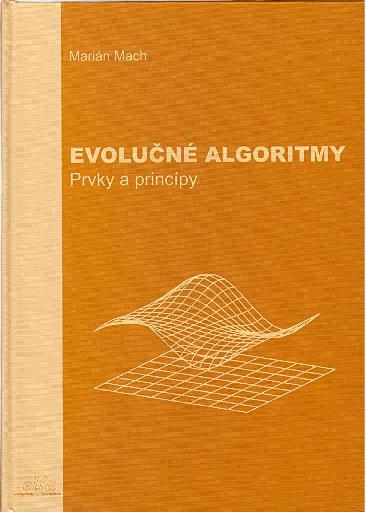MACH, M.:
Evolutionary algorithms: elements and principles.
Elfa, Kosice, 2009, 250 pages,
ISBN 978-80-8086-123-0.
|

|
|
Full text
of the book in pdf format (1 MB) (Slovak version only).
|
|
Contents
- Foreword
- 1 Introduction
- I Evolutionary algorithm structure
-
- 2 General structure
-
- 2.1 Illustrative evolution
- 3 Solution candidate space and search space
- II Fitness landscape
-
- 4 Representation
-
- 4.1 Standard coding schemes
- 4.2 Selected coding examples
-
- 4.2.1 Representation of real numbers
- 4.2.2 Representation of binary/n-ary values
- 4.2.3 Representation of orderings
- 4.2.4 Representation of tree structures
- 4.3 Illustration of alternative representations
- 5 Fitness
-
- 5.1 Approximate fitness
- 5.2 Competitive fitness
- 5.3 Complexity based fitness
- 5.4 Fitness combinations
- 5.5 Illustration of alternative fitness
-
- III Basic algorithm blocks
-
- 6 Selection
-
- 6.1 Population sampling
-
- 6.1.1 Sampling with explicit probabilities
-
- 6.1.1.1 Selection of individuals
- 6.1.1.2 Selection probability calculation
- 6.1.2 Sampling with implicit probabilities
-
- 6.1.2.1 Tournaments
- 6.1.2.2 Truncation
- 6.1.2.3 Random selection
- 6.2 Fitness remapping
-
- 6.2.1 Scaling based remapping
- 6.2.2 Ranking based remapping
- 6.3 Comparison of selection methods
- 7 Replacement
-
- 7.1 Replacement types
- 7.2 Selection of individuals and selection pressure
- 8 Genetic operators
-
- 8.1 Operators for binary coding
- 8.2 Operators for n-ary coding
- 8.3 Operators for real coding
- 8.4 Operators for permutation coding
- 8.5 Comparison of recombination operators
- IV Ready to start
-
- 9 Parameter setting
-
- 9.1 Exogene setting
- 9.2 Adaptive setting
- 9.3 Self-adaptive setting
- 9.4 No free lunch theorem
- 10 Population diversity maintaining
-
- 10.1 Genetic load
- 10.2 Subpopulation maintaining
- 10.3 Penalisation
- 10.4 Preference of difference
- 10.5 Comparison of diversity maintaining methods
- V Look under hood
-
- 11 Building block hypothesis
- 12 Visualisation
-
- 12.1 Visualisation of population
- 12.2 Visualisation of individuals
- 12.3 Visualisation of attributes
- VI What is what
-
- 13 Evolutionary algorithms alternatives
-
- 13.1 Classic approaches
-
- 13.1.1 Evolutionary strategy
- 13.1.2 Evolutionary programming
- 13.1.3 Genetic algorithm
- 13.2 Newer approaches
-
- 13.2.1 Genetic programming
- 13.2.2 Breeder algorithm
- 13.2.3 Differential evolution
- 13.2.4 Self-organising migration algorithm
- 13.2.5 Harmonic search
- 13.2.6 Eugenic evolution
- VII Appendixes
-
- Mathematical symbols
- Slovak English dictionary
- References
- Index
|
|